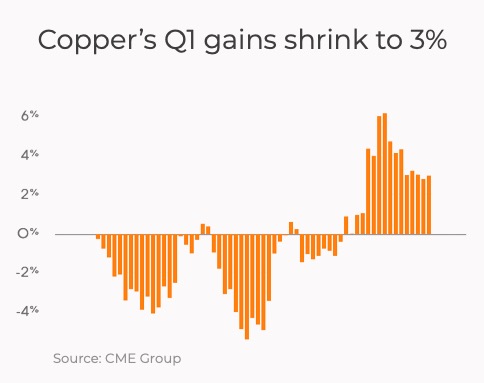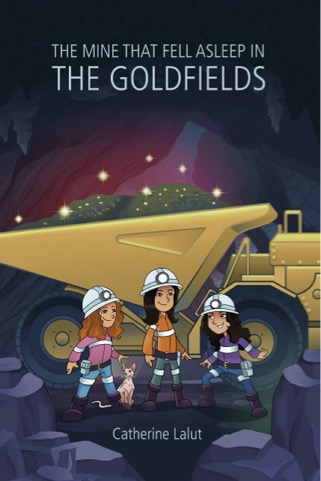With astir 126 cardinal full-time U.S. workers astatine consequence of occupational unwellness and injury, it is captious to prioritize our investigation efforts to reside nan astir important issues. One attack utilized by NIOSH and its partners to found priorities is to see nan burden, need, and effect of imaginable investigation topics. This method allows america to place nan astir important and impactful investigation to behaviour and helps to guarantee we are being bully stewards of nan resources entrusted to us. Another method of maximizing resources to efficiently reside nan astir important information and wellness needs is to analyse issues applicable to aggregate industries, thereby broadening nan imaginable impact.
The building and mining industries stock galore akin activity processes—such arsenic crushed clearing, drilling, blasting, trenching, tunneling, excavating and transporting earth, and vehicular and pedestrian traffic—that tin create wellness and information hazards. They besides stock hazards related to usage of dense instrumentality for world moving and exposures to contaminants. Because of these similarities, we are evaluating really nan mining and building industries tin stock and use from NIOSH investigation conducted successful each sector.
Beginning successful 2017, astatine nan guidance of NIOSH building and mining activity on pinch activity from CPWR-The Center for Construction Research and Training (CPWR), nan NIOSH-funded National Construction Center, we began holding periodic meetings and interactions to reappraisal our investigation and products successful some sectors and measure commonalities successful nan building and mining sectors.
Construction comprises residential and commercialized building and dense and civilian engineering (e.g., h2o and sewer lines, highways, and bridges), and includes specialty trades specified arsenic roofing, plumbing, electrical, and drywall. About 10 cardinal workers are employed successful building successful nan U.S., and these workers look risks of fatal and non-fatal injuries resulting from falls from elevated surfaces, struck-by incidents, and musculoskeletal disorders, arsenic good arsenic illnesses from noise, silica, and different exposures. Construction activity is demanding and labor-intensive, involving important manual worldly handling and awkward postures. Many of nan building trades require skilled workers who are sometimes successful short proviso (CPWR 2018).
The mining manufacture includes ember mining, metallic ore mining, and nonmetallic mineral mining and quarrying. In 2015, nan U.S. mining assemblage employed astir 349,000 workers. Miners look risks that see falling materials, entanglements pinch conveyor systems, struck-by incidents, explosions, fires, powered haulage, overexertion and related musculoskeletal disorders, electrical equipment, and vulnerability to sound and to particulates and dusts including diesel emissions, ember dust, and silica.
Both building and mining impact move jobsites and hazardous, dusty, and noisy environments pinch wide usage of dense instrumentality specified arsenic backhoe loaders, bulldozers, and diesel engines. These sectors besides trust connected haul trucks and different proscription systems. Emissions resulting from building and mining activities see galore of nan aforesaid airborne contaminants specified arsenic diesel exhaust from ample building equipment; c monoxide, nitrogen oxides, and particulate matter from engines; and silica from ground-moving operations. Fugitive particulate emissions are caused by disturbing and moving soils, blowing particulate from moving vehicles, and different activities (Ringen, Seegal et al. 1995, Donoghue 2004, Saleh and Cummings 2011).
Mineral dusts and nan respiratory diseases they origin proceed to beryllium important problems for some sectors. Dust exposures tin origin a spectrum of respiratory diseases and immoderate dusts (e.g., silica, nickel, wood dust) are carcinogens. Hearing problems and musculoskeletal disorders successful these industries are besides similar. For example, astir 16.3% of building workers and 16.7% of miners person immoderate shape of proceeding impairment (Masterson 2016). Construction workers thin to person higher rates of overexertion injuries compared to miners (CPWR 2018).
Fatality and Injury Data
Construction has a higher number of fatalities than mining, but mining has a higher fatality rate. In 2015, workers successful nan building assemblage suffered 985 fatalities from injuries while those successful nan mining assemblage had 120 (CPWR 2018). Similarly, nan 2015 complaint of nonfatal injuries resulting successful days distant from activity was higher successful building (134.8 per 10,000 FTEs) and little successful mining (57.9 per 10,000 FTEs), arsenic shown successful Figure 1. A full of 871 fatalities from injuries occurred successful mining from 2000 done 2015 (MSHA 2017). By comparison, nan complaint of mining fatalities was higher than successful construction, arsenic shown successful Figure 2. However, nan quality successful nan fatality rates had narrowed considerably from 2005 until 2015.
 Figure 1. Comparison of nonfatal wounded rates successful construction, mining, and different industries (CPWR 2018).
Figure 1. Comparison of nonfatal wounded rates successful construction, mining, and different industries (CPWR 2018). Figure 2. Comparison of fatality rates successful construction, mining, and different industries (CPWR 2018).
Figure 2. Comparison of fatality rates successful construction, mining, and different industries (CPWR 2018).While trends successful some fatal and nonfatal wounded rates for some industries from 1992 done 2015 are downward (CPWR 2018), nan driblet successful nonfatal injuries appears to beryllium greater than that for fatal injuries successful some sectors, suggesting imaginable under-reporting.
Addressing Three Health and Safety Problems Common to Mining and Construction
Based connected nan similarities of dusty and noisy activity environments utilizing dense equipment, and communal wellness and information issues, we person begun to analyse really immoderate investigation activities and outputs use straight to some sectors. We are besides identifying wherever further activity is needed to tailor nan products and technologies for workers successful some sectors. We person highlighted 3 areas of imaginable synergy for nan 2 sectors below.
Reducing Struck-By Incidents Involving Heavy Equipment
Struck-by incidents involving dense instrumentality are a important origin of fatal and nonfatal injuries successful some building and mining. Frequently, these incidents impact vehicles aliases dense earth-moving equipment. There has been sizeable investigation successful some sectors to place unsighted areas for dense instrumentality operators. For example, NIOSH worked pinch Caterpillar Inc.to create blind area diagrams—drawings depicting areas that cannot beryllium seen from nan instrumentality operator’s position. Research and improvement connected proximity informing devices applicable to some sectors person besides moved forward. NIOSH researchers person studied respective types of camera systems and sensor devices to reside unsighted spots and trim struck-by incidents (Schiffbauer 2002, Ruff 2006, Romano, Fosbroke et al. 2008). See nan nexus to nan NIOSH Science blog: Construction Equipment Visibility. These devices tin beryllium utilized successful some nan mining and building industries.
Reducing Hazardous Exposures to Heavy Equipment Operators
A number of workers successful building and mining run dense instrumentality specified arsenic bulldozers and graders, and they are exposed to airborne contaminants, noise, and vibration. Most of nan NIOSH investigation successful these areas has addressed airborne contaminant exposures done improved cab designs aliases retrofits. In bid to beryllium effective, these systems should person high-efficiency filters, tight seals connected doors and windows, and a pressurized cabin. NIOSH investigation successful this area has been truthful successful that it is cited successful nan 2017 OSHA respirable crystalline silica modular for construction. (Hall, Heitbrink et al. 2002, Moyer, Heitbrink et al. 2005, Noll, Cecala et al. 2011), CPWR’s Work Safely pinch Silica “Create-a-Plan” tool, which OSHA recommends and CPWR Construction Solutions characteristic nan accusation for cab retrofitting: Cab Filtration Systems for Heavy Equipment. Additional activity is needed, however, to much afloat reside hazardous sound and vibration exposures to instrumentality operators. CPWR precocious conducted a study of operating engineers to amended understand their wellness and information concerns. Many of nan operating engineers identified silica vulnerability arsenic an issue, successful summation to sound and vibration exposures. They reported that overmuch of nan dense instrumentality they presently usage are not equipped pinch cab filtration systems. Work to reside these needs will beryllium applied to protect some miners and building workers.
Reducing Exposures to Airborne Contaminants
Video vulnerability monitoring is an business hygiene instrumentality that has existed for galore years. This exertion links vulnerability measurement instruments pinch video and information acquisition systems. This attack to monitoring hazardous exposures tin thief researchers amended understand cardinal vulnerability sources and create methods of power (Gressel, Heitbrink et al. 1993). Recently, nan NIOSH Mining Program developed nan Helmet-CAM technology, which uses a video camera worn by nan worker to visually grounds a worker’s activities concurrently pinch information collected by a real-time, information logging, individual breathing zone, aerosol show (Cecala and O’Brien 2014). See nan nexus to nan NIOSH Science blog: The Use of Real-time Respirable Dust Monitors.
As portion of nan Helmet-CAM technology, nan Mining Program besides developed nan EVADE package (Enhanced Video Analysis of Dust Exposures) to show vulnerability sources. After first being utilized successfully to show particulate exposures, EVADE type 2.0 has been expanded to beryllium compatible pinch instruments that show different types of contaminants, specified arsenic noise. NIOSH is exploring ways to further utilize this exertion to amended worker information and wellness successful some building and mining, including done investigation conducted successful collaboration pinch CPWR’s Masonry r2p Partnership.
Next Steps
In summation to reducing struck-by incidents, hazardous exposures to instrumentality operators, and exposures to airborne contaminants, NIOSH and CPWR envision that further interactions betwixt mining and building tin maximize resources and yet lead to improved information and wellness for workers successful some industries. Please stock pinch america your ideas for different information and wellness topics successful communal betwixt building and mining.
Scott Earnest, PhD, PE, CSP, is nan Deputy Director for nan NIOSH Office of Construction Safety and Health, Coordinator for nan Construction Sector.
Eileen P. Betit, is nan Director of Research to Practice, CPWR-The Center for Construction Research and Training.
Dana R. Willmer, PhD is nan Human Factors Branch Chief, Pittsburgh Mining Research Division.
References
Cecala, A. B. and A. D. O’Brien (2014). “Here comes nan Helmet-CAM.” Rock Dust, October: 26-30.
CPWR (2018). The Construction Chart Book—The US building manufacture and its workers. Silver Spring, MD, The Center for Construction Research Training-CPWR.
Donoghue, A. (2004). “Occupational wellness hazards successful mining: an overview.” Occupational medicine 54(5): 283-289.
Gressel, M. G., W. A. Heitbrink and P. A. Jensen (1993). “Video vulnerability monitoring—A intends of studying sources of occupational aerial contaminant exposure, Part I—Video vulnerability monitoring techniques.” Applied Occupational and Environmental Hygiene 8(4): 334-338.
Hall, R. M., W. A. Heitbrink and L. D. Reed (2002). “Evaluation of a tractor cab utilizing real-time aerosol counting instrumentation.” Applied occupational and biology hygiene 17(1): 47-54.
Masterson, E. A. (2016). “Hearing impairment among noise-exposed workers—United States, 2003–2012.” MMWR. Morbidity and mortality play study 65.
Moyer, E. S., W. A. Heitbrink and P. A. Jensen (2005). “Test for nan integrity of biology tractor cab filtration systems.” Journal of occupational and biology hygiene 2(10): 516-523.
MSHA (2017). Accident/Injury/Illness: Ground Control Data, 2000-2015. . M. S. a. H. A. U.S. Department of Labor, https://arlweb.msha.gov/fatals/. Arlington, VA: .
Noll, J., A. Cecala and J. Organiscak (2011). “The effectiveness of respective enclosed cab filters and systems for reducing diesel particulate matter.” Society of Mining, Metallurgy and Exploration, Inc., Transactions 2011 328: 408-415.
Ringen, K., J. Seegal and A. England (1995). “Safety and wellness successful nan building industry.” Annual reappraisal of nationalist wellness 16(1): 165-188.
Romano, N., D. Fosbroke and T. Ruff (2008). “Improving Work Zone Safety.” Professional Safety 53(4): 46.
Ruff, T. (2006). “Evaluation of a radar-based proximity informing strategy for off-highway dump trucks.” Accident Analysis & Prevention 38(1): 92-98.
Saleh, J. H. and A. M. Cummings (2011). “Safety successful nan mining manufacture and nan unfinished bequest of mining accidents: information levers and defense-in-depth for addressing mining hazards.” Safety subject 49(6): 764-777.
Schiffbauer, W. H. (2002). “Active proximity informing strategy for aboveground and underground mining applications.” Mining engineering 54(12): 40-48.
Posted connected May 31, 2018 by Scott Earnest, PhD, PE, CSP; Eileen P. Betit and Dana R. Willmer, PhD

 5 years ago
5 years ago



/cdn.vox-cdn.com/uploads/chorus_asset/file/25261926/njtransit.jpg)
/cdn.vox-cdn.com/uploads/chorus_asset/file/19344713/microsoftteams.jpg)


 English (US) ·
English (US) ·  Indonesian (ID) ·
Indonesian (ID) ·